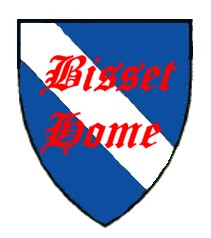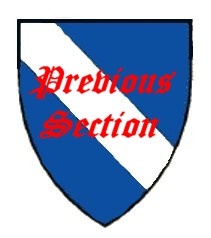
Appendix VI:
Baldred & Peter Bisset

 |
Appendix VI:
|

|
[Taken from the Dictionary of National Biography.]
The two clerics Baldred and Peter Bisset are often confused so for the sake of clarity both are included
[Tanner’s Bibl. Brit. p. 102; Skene’s Chronicles of the Picts and Scots (1867), pp. 1xi, 1xx, 271-84; Skene’s Coronation Stone (1869), pp. 19-21; Skene’s edition of Johannis de Fordun Chronica in Historians of Scotland, i, pp. xxxv, 332, ii. 325, 394.]
“In 1301 the immensely learned canon lawyer Master Baldred Bisset advised the Pope that the Scots had been converted to Christianity some 400 years before the English and that no fewer that thirty six kings had ruled over the Scots while the English languished in paganism.” [Scotland a New History, p 99-100. Michael Lynch]
[Lynch in stating that Baldred was the canon lawyer is mixing the two Bissets the cannon lawyer was Peter Bisset.]
“Baldred Bisset led a diplomatic delegation to Rome in 1301 where Baldred set out in his “processus” the historical justification for the ancient right of Scotland to freedom from domination. This would achieve its most elegant form later in the document known as the “The Declaration of Arbroath”.
Professor of canon law in the university of Bologna, Italy, was a native of the county of Fife, and a descendant by a previous marriage of Sir Thomas Bisset, who after his marriage with the Countess Isabel, daughter and heiress of Duncan MacDuff, Earl of Fife, received a charter from David II granting him the earldom, but left no issue by her.
After completing his studied in grammar and philosophy at the University of
St Andrews, Bisset attended classes of law at the University of Paris. Proceeding
to Italy he received the degree of LL.D from the University of Bologna, where
he afterwards became professor of civil law. Tanner (Bibliotheca Britannica–
Hibernica, 102), on the authority of Dempster (Historia Ecclesiastica Gentis
Scotorum, ii.95). stated that he flourished in 1401, a palpable error. He assigns
to him, also on the authority of Dempster, De Irregularitate liber unus, and
Lectiones Seriales liber unus, and to a Petrus Bizarrus, who flourished in 1565,
Orationes aliquot et poemate. This Petrus Bizarrus he conjectures to have been
possibly identical with Pietro Bizari called also Petrus Perusinus, but in reality
Bixarrus here is a misspelt form of Bissartus, and Peter Bisset, the author
of De Irregularitate, is identical with the author of Orationes aliquot et poemate.
Both works were includes in the volume entitled Patricii Bissarti Opera omnia,
viz Poemata, Ortiones, Lectiones Seriales et Liber de Irregulartate, published
at Venice in 1565. Bisset died in the latter part of 1568.
[Dempster’s Historica Ecclesiastica Gentis Scotorum, ii. 95; Tanner’s
Bibl. Brit. 102; Mackenzie’s Lives of Scottish writers, iii. 99, 101;
Chambers’s Biog. Dict, of Eminent Scotsmen, i. 129; Notes and Queries,
5th series, vi. 389-90.]
 |
Appendix VI:
|

|